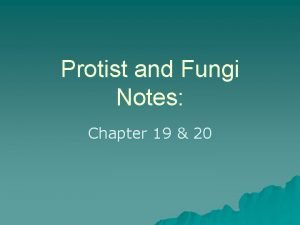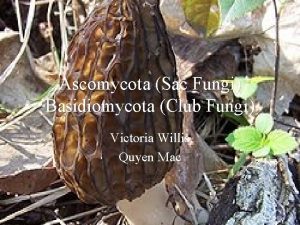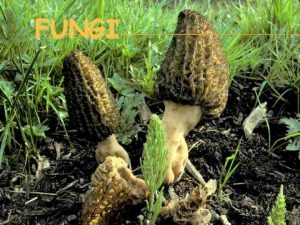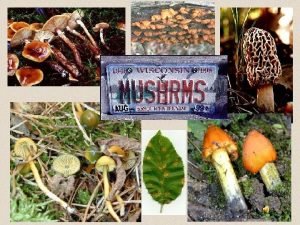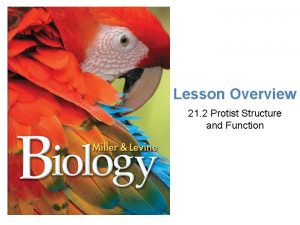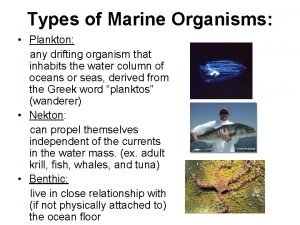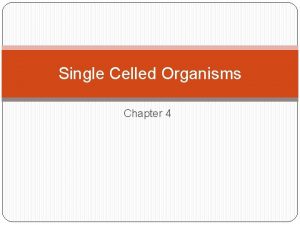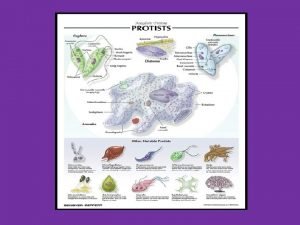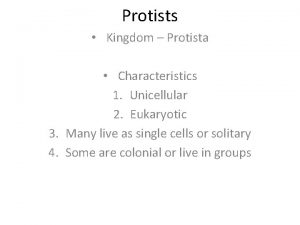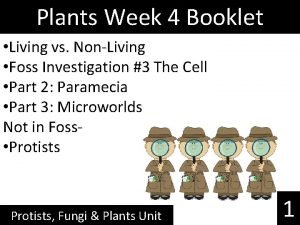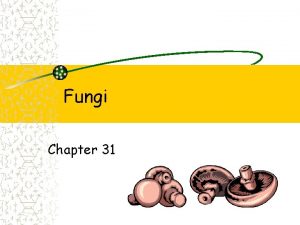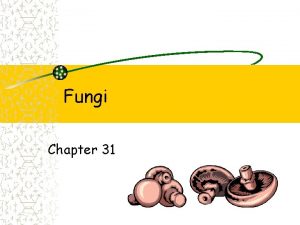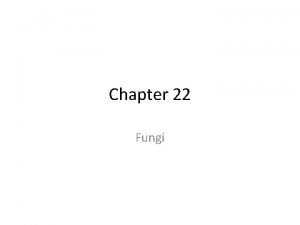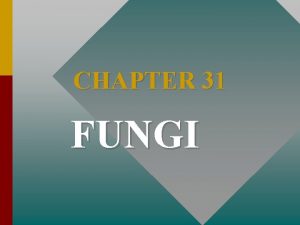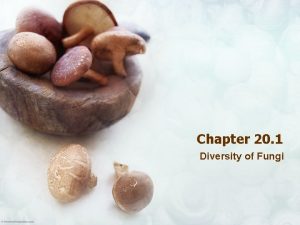Protist and Fungi Notes Chapter 19 20 6













- Slides: 13

Protist and Fungi Notes: Chapter 19 & 20

6 Kingdoms Archaebacteria ü Eubacteria u Protist u Fungi u Plant u Animal ü

Protists: u Intro movie Junk-Drawer: Most diverse kingdom u Eukaryotes: mostly unicellular but some multicellular u Live in moist environments u

Protists: Move by using flagellum, cilia, pseudopods (“false feet”) u Can cause disease: u – Ex: malaria (protist lives inside mosquito)

Protozoans: Animal – like protists u Unicellular heterotrophs u Usually reproduce asexually (one parent makes identical offspring) u Ex: amoeba (move by pseudopodia), paramecium

Algae: Plant- like protists Autotrophs: Carry out photosynthesis, contain chlorophyll u Many colors depending on pigment u Not plants because no roots, stems, or leaves u

Fungus-like protists: Heterotrophs: decompose organic material u Cause damage to crops (Ireland potato famine) u Ex: slime molds, downy mildews u Slime molds helping build roads! u

Fungi: What is a fungis?

Fungi: u u u Eukaryotes: mostly multicellular, some unicellular Cell wall of chitin Heterotrophs: decomposers; extracellular digestion

Fungi: u u Threadlike filaments called hyphae form a mycelium (fruit or vegetative part of fungus) Reproduction: – Asexual reproduction by producing spores or by budding; – Sexual reproduction


Fungi: u u Examples: blue cheese, penicillin, athlete’s foot, mushrooms, food mold, baker’s yeast Mycologists: scientists who study fungi

u Quiz on viruses, bacteria, protists and fungi tomorrow!

